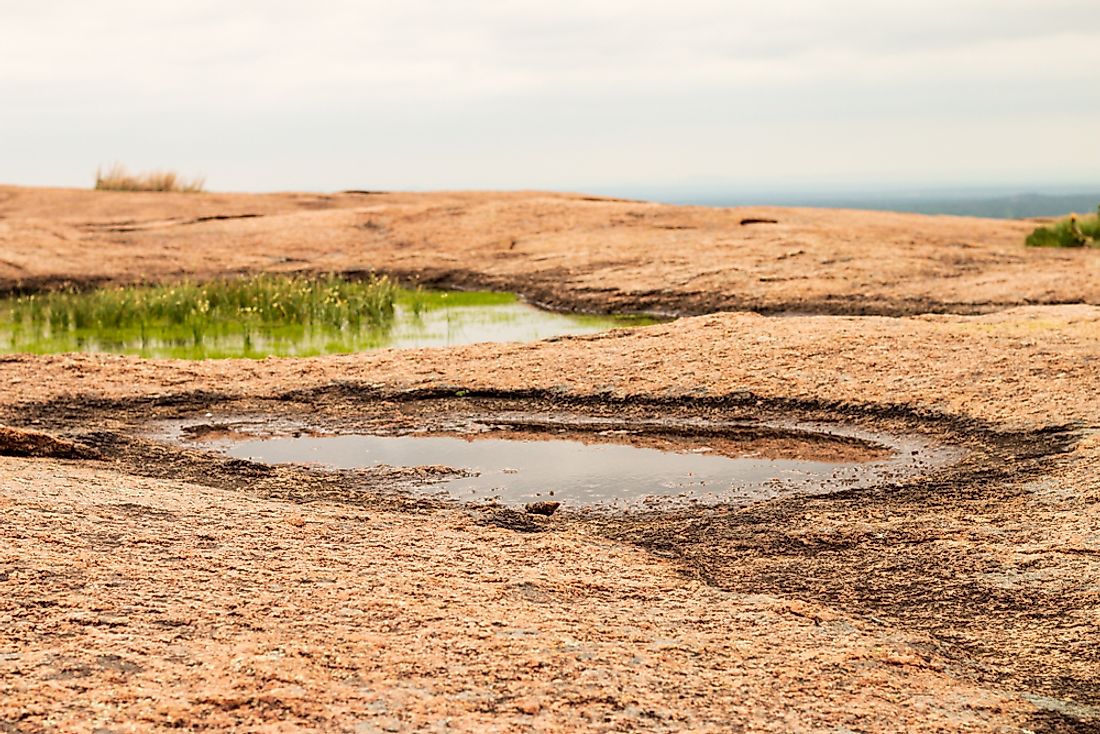What Is A Vernal Pool?

A vernal pool, also known as an ephemeral pool, is a seasonal pond of water that provides a habitat for unique and rare animals and plants. These pools, which have varying sizes, mostly occur in Mediterranean climate conditions. Usually, this type of wetland does not have fish living in the water thus providing the perfect conditions for natal species of insects and amphibians that cannot survive predation or competition from fish. However, certain fish species, such as killifishes, have specifically adapted for this kind of habitat.
Since they are seasonal, the season between winter and spring means that the water levels are varied but the pond may dry out completely in fall and spring. At times, the pools may dry out completely and refill several times in one season. Sometimes, the pools are interconnected by a series of small outlets known as vernal swales thus leading to the formation of a complex. Beneath the pool, there is a bedrock or an equally hard bed that helps to ensure the water does not drain away.
Habitat
The habitats of these pools are unique considering that they may dry up completely at times. When they have water, they fill up with various species of plants and animals with the most common being toads and breeding frogs although some salamanders also use them mostly for breeding. Other species, which are also indicator species for vernal pools, include the likes of fairy shrimp, wood frogs, some mole salamanders, and the spadefoot toad. The last two are indicator species in the New England region of the United States. Plants also grow in the pools although they vary from one ecological region to another.
Due to the favorable conditions that are present when vernal pools fill up, flowering is almost always simultaneous. These favorable conditions include high moisture, reduced competition, favorable weather, and salinity of the water. Some of the plant species include the likes of false Venus’s looking glass, pincushion plants, Solano grass, and others. Some unique species include the San Diego mesa mint, which is extremely rare and grows in some San Diego vernal pools. Other rare species are Lasthenia conjugens (San Fransico Bay Area) and Limnanthes vinculans (California).
Loss and Preservation
Despite their unique role in the preservation of unique plant life, a huge percentage of the pools have been destroyed. For example, 90% of the ecosystems created by the pool in California have been destroyed. Even more worrying is the fact that most of the destruction occurred recently. Some of the threats to vernal pools include things like changes in hydrology, urbanization, climate change, agriculture, and irresponsible livestock grazing.
Naturally, their uniqueness means that these pools have to be restored or protected more. Despite the efforts by the relevant authorities, the success rate is not consistent. Some of the theories put forward for this varied success are that the constructed pools are deeper, have steeper slopes, and have narrower edges. Mitigation strategies, where an entity can destroy a protected habitat on the condition that it will replace the habitat, are therefore ineffective for vernal pools since their restoration and replacement have proven difficult.











